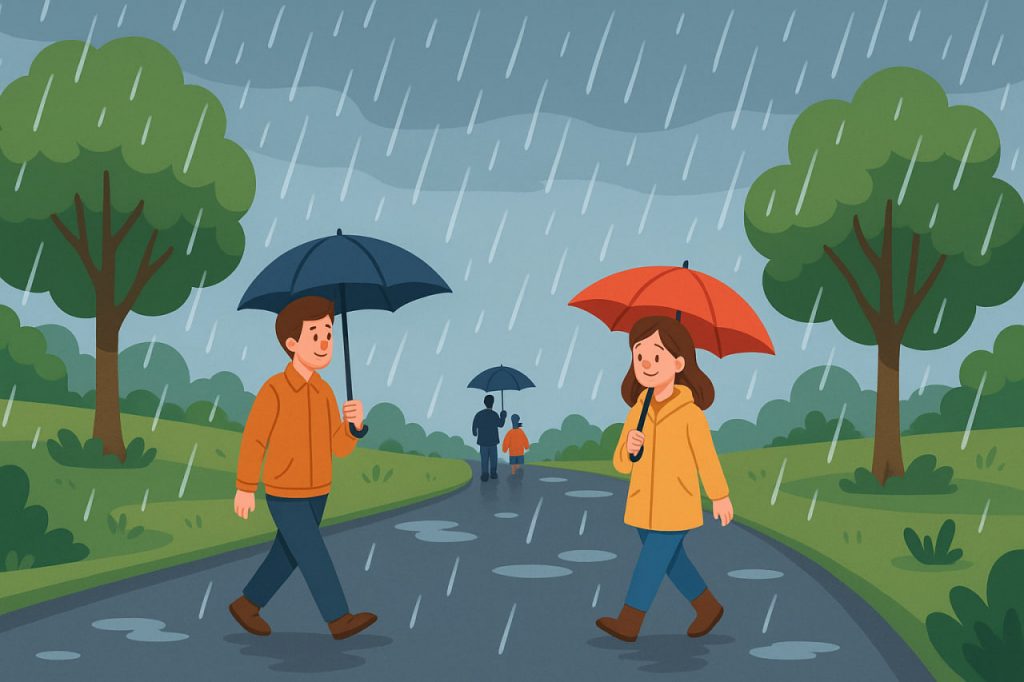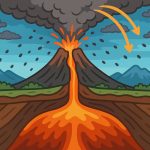Rain is one of the most vital natural phenomena on our planet. It sustains life, shapes landscapes, nourishes crops, and influences the climate. Every drop of rain is part of an endless cycle that connects oceans, clouds, rivers, and living beings in a delicate balance. While it may seem ordinary, rain is a powerful reminder of the interconnectedness of nature and the forces that make Earth habitable.
How Rain Forms
Rain is a key part of the water cycle, a continuous process driven by the Sun’s energy. It begins with evaporation, when water from oceans, lakes, and rivers turns into vapor and rises into the atmosphere. As this vapor cools, it condenses into tiny droplets that form clouds. When these droplets combine and grow too heavy, they fall back to Earth as precipitation — rain, snow, sleet, or hail, depending on temperature and humidity.
Once the rain reaches the ground, part of it flows into rivers and lakes, part seeps into the soil to nourish plants, and part eventually returns to the ocean — completing the water cycle.
Types of Rain
Not all rain is the same. Depending on atmospheric conditions, meteorologists classify rain into several types:
- Convective rain — caused by rising warm air, typical in tropical regions, often short but intense.
- Frontal rain — forms when warm and cold air masses meet, creating widespread, steady rainfall.
- Orographic rain — occurs when moist air is forced up mountain slopes, cooling and releasing rain on one side.
- Acid rain — caused by industrial pollution; it contains acidic compounds that can damage forests, lakes, and buildings.
The Importance of Rain for Life
Rain is essential to nearly every ecosystem on Earth:
- It provides fresh water for drinking, agriculture, and industry.
- It feeds rivers and aquifers, ensuring the flow of natural water sources.
- It supports plant growth, which in turn produces oxygen and food.
- It regulates temperature and helps clean the air by washing away dust and pollutants.
Without regular rainfall, many regions would become arid deserts, unable to sustain life.
When Too Much or Too Little Rain Falls
While rain is vital, imbalances can lead to natural disasters:
- Droughts occur when rainfall is scarce, causing crop failures, famine, and wildfires.
- Floods happen when heavy rainfall overwhelms the ground’s ability to absorb water, damaging infrastructure and ecosystems.
- Landslides can be triggered in mountainous regions when saturated soil loses stability.
Managing rainfall — through reservoirs, drainage systems, and sustainable agriculture — helps societies adapt to climate variability.
The Sound and Emotion of Rain
Beyond its physical role, rain has inspired art, poetry, and music for centuries. Its rhythmic sound calms the mind, and the smell after rain — known as petrichor — evokes feelings of freshness and renewal. For many, rain symbolizes cleansing, rebirth, and hope.
Climate Change and the Rainfall Pattern
Global warming is altering rain distribution across the planet. Some regions are experiencing heavier storms and floods, while others face prolonged droughts. These shifts threaten agriculture, freshwater supplies, and human settlements. Understanding how rainfall patterns change helps scientists predict and mitigate climate impacts.
Interesting Facts
- The heaviest rainfall ever recorded was in Mawsynram, India, which receives about 11,800 mm (465 inches) per year.
- A single raindrop can fall at speeds of up to 32 km/h (20 mph).
- The smell after rain — petrichor — comes from oils released by plants and bacteria in the soil.
- Venus has sulfuric acid rain, but it evaporates before reaching the surface.
Glossary
- Evaporation — the process of water turning into vapor.
- Condensation — vapor cooling and forming clouds.
- Precipitation — any form of water falling from the sky.
- Water cycle — the continuous movement of water between the Earth and atmosphere.
- Petrichor — the pleasant scent produced when rain falls on dry soil.


